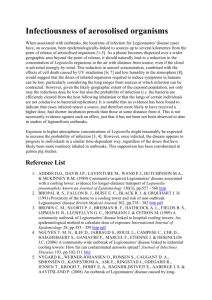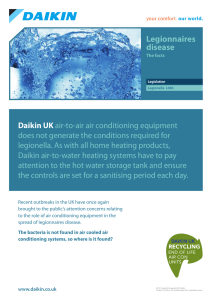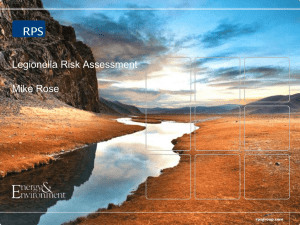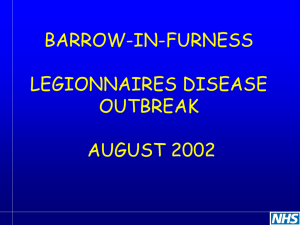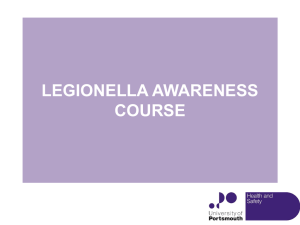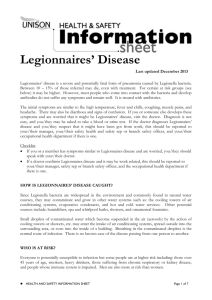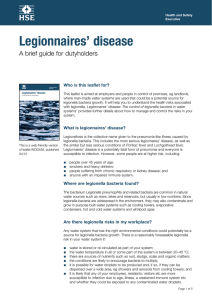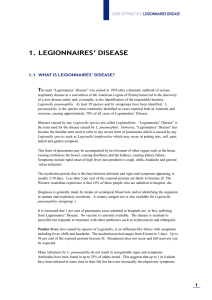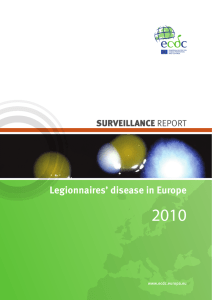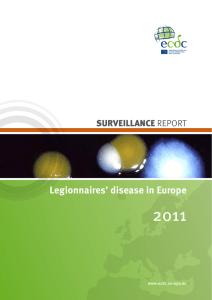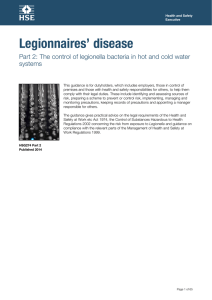INDOOR WATER FEATURES, DECORATIVE FOUNTAINS: RECOMMEND NON - USE
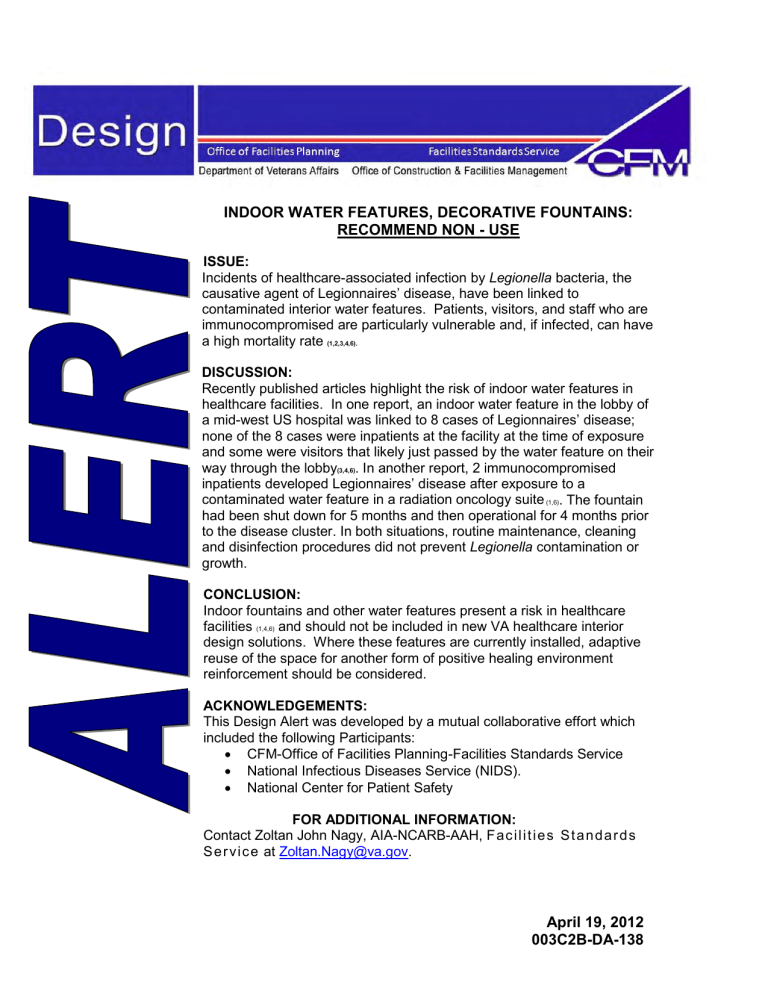
INDOOR WATER FEATURES, DECORATIVE FOUNTAINS:
RECOMMEND NON - USE
ISSUE:
Incidents of healthcare-associated infection by Legionella bacteria, the causative agent of Legionnaires’ disease, have been linked to contaminated interior water features. Patients, visitors, and staff who are immunocompromised are particularly vulnerable and, if infected, can have a high mortality rate
(1,2,3,4,6).
DISCUSSION:
Recently published articles highlight the risk of indoor water features in healthcare facilities. In one report, an indoor water feature in the lobby of a mid-west US hospital was linked to 8 cases of Legionnaires’ disease; none of the 8 cases were inpatients at the facility at the time of exposure and some were visitors that likely just passed by the water feature on their way through the lobby
(3,4,6)
. In another report, 2 immunocompromised inpatients developed Legionnaires’ disease after exposure to a contaminated water feature in a radiation oncology suite
(1,6)
. The fountain had been shut down for 5 months and then operational for 4 months prior to the disease cluster. In both situations, routine maintenance, cleaning and disinfection procedures did not prevent Legionella contamination or growth.
CONCLUSION:
Indoor fountains and other water features present a risk in healthcare facilities
(1,4,6)
and should not be included in new VA healthcare interior design solutions. Where these features are currently installed, adaptive reuse of the space for another form of positive healing environment reinforcement should be considered.
ACKNOWLEDGEMENTS:
This Design Alert was developed by a mutual collaborative effort which included the following Participants:
•
CFM-Office of Facilities Planning-Facilities Standards Service
•
National Infectious Diseases Service (NIDS).
•
National Center for Patient Safety
FOR ADDITIONAL INFORMATION:
Contact Zoltan John Nagy, AIA-NCARB-AAH, F a c i l i t i e s S t a n d a r d s
S e r v i c e at Zoltan.Nagy@va.gov
.
April 19, 2012
003C2B-DA-138
REFERENCES:
1.
Tara N. Palmore, et al. A Cluster of Nosocomial Legionnaire’s Disease Linked to a
Contaminated Hospital Decorative Water Fountain. August, 2009. Infection Control and Hospital Epidemiology 30(8):764-768. NIH Public Access Author Manuscript available at http://www.ncbi.nlm.nih.gov/pmc/articles/PMC2886954/pdf/nihms157449.pdf
2. Yusen E. Lin, et al. Prevention of Hospital-Acquired Legionellosis. August, 2011.
Current Opinion in Infectious Diseases 24(4)350-356.
3. Journal Article Details Legionnaires' Disease Outbreak Associated with Hospital's
Water Wall Fountain, in News@WSLH. January, 2012. Available at http://www.slh.wisc.edu/news/legionnaires_hospital_water_wall.dot
4. Thomas E. Haupt, et al. An Outbreak of Legionnaires Disease Associated with a
Decorative Water Wall Fountain in a Hospital. February, 2012, Infection Control and
Hospital Epidemiology 33(2):185-191.
5. Deanna Martin, American Society for Healthcare Engineering of the American
Hospital Association. Hospitals Should Prepare Now for ASHRAE's Upcoming
Legionella Standard. Health Facilities Management Magazine, February, 2012.
Available at http://www.hfmmagazine.com/hfmmagazine_app/jsp/articledisplay.jsp?dcrpath=HFM
MAGAZINE/Article/data/02FEB2012/0212HFM_FEA_CodesStandards&domain=HF
MMAGAZINE
6. FGI 2010 Guidelines for Design and Construction of Health Care Facilities,
Published by ASHE (American Society for Healthcare Engineering of the American
Hospital Association)
